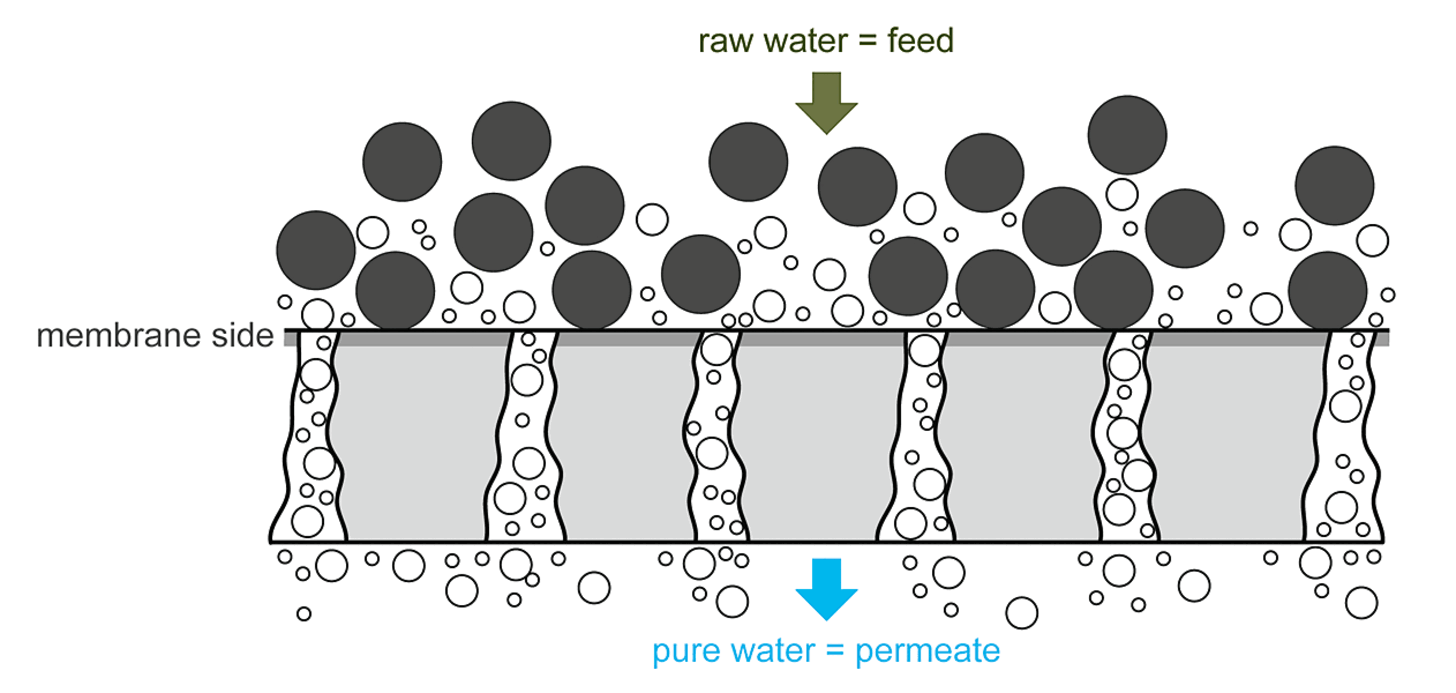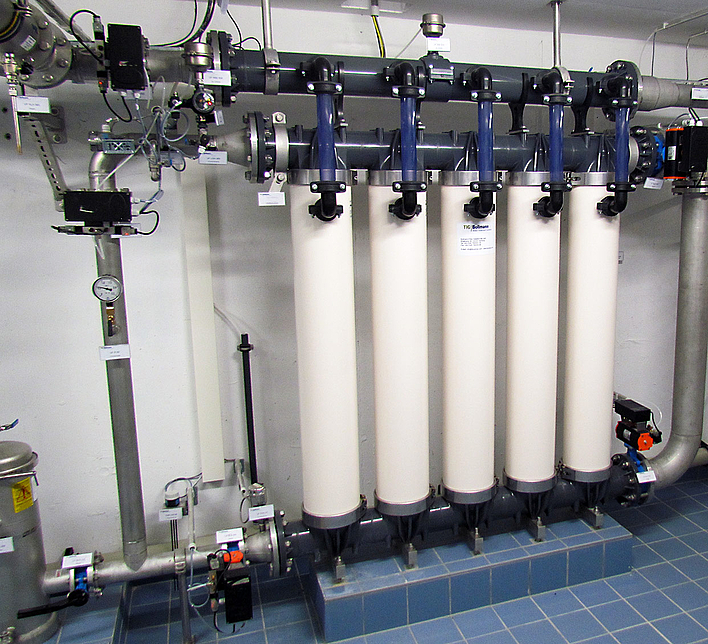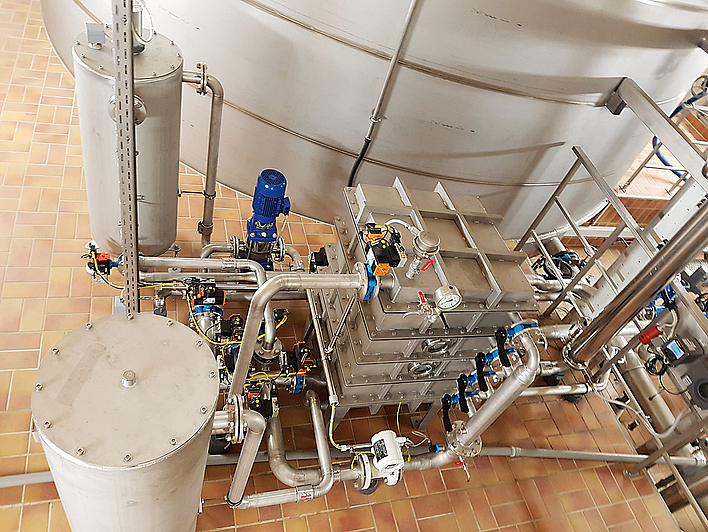Membrane processes
The following processes are grouped together under membrane processes:
- Microfiltration (MF)
- Ultrafiltration (UF)
- Nanofiltration (NF)
- Reverse osmosis (RO)
Micro- and ultrafiltrationmembranes are purely mechanical "fine sieves". These fine sieves consist of porous, artificially created films, so-called membranes, with precisely defined pore diameters. The separating layers are applied to so-called carrier material. Polymers or ceramics are used as carrier materials. Membrane filtration technologies are used for the widest variety of applications in the water treatment field, often in conjunction with classical processes.
In nanofiltration and reverse osmosis, dense, diffusion-open membranes are used. In these processes, the separation process is performed by diffusion through the membrane. The driving force in all cases is the differential pressure. While differential pressures of up to 2 bar are required for micro- and ultrafiltration, low-pressure nanofiltration requires differential pressures of up to 8 bar and reverse osmosis up to 60 bar.
Only the microfiltration and ultrafiltration are covered on this page.
Membrane design
The actual effective membrane layer is extremely thin and is located on the side facing the raw water.
The absolutely largest part of a membrane is the carrier material required for the physical design and strength. It is important that the pores of a membrane increase in size toward the pure water in order for the membrane to function properly. Otherwise, there is a risk of continuous blocking.
Materials
Present membranes consist of plastics (e.g. polyethersulfone, PVDF,...) or ceramics (aluminium oxide, silicon carbide,...).
Ceramic membranes are more expensive than polymer membranes due to the manufacturing process. However, the better chemical resistance and also the considerably higher permeability of the ceramic membranes are advantageous.
Types
A differentiation is made between the following, depending on the use and design:
- Hollow-fibre membrane modules
- Spiral modules
- Pipe modules
- Plate modules
- Cushion modules
Our ceramic block modules represent an interesting and promising new development. These are loaded with either silicon carbide or aluminium oxide plates.
We design and build plants for all membrane prosesses. To this purpose we avail ourselves of state-of-the-art knowledge and see great opportunities in the application of combination processes, such as ozone-supported membrane filtration and chemicalfree regeneration with use of ozone.
Send us your requirements - we would also be very happy to work for you.






